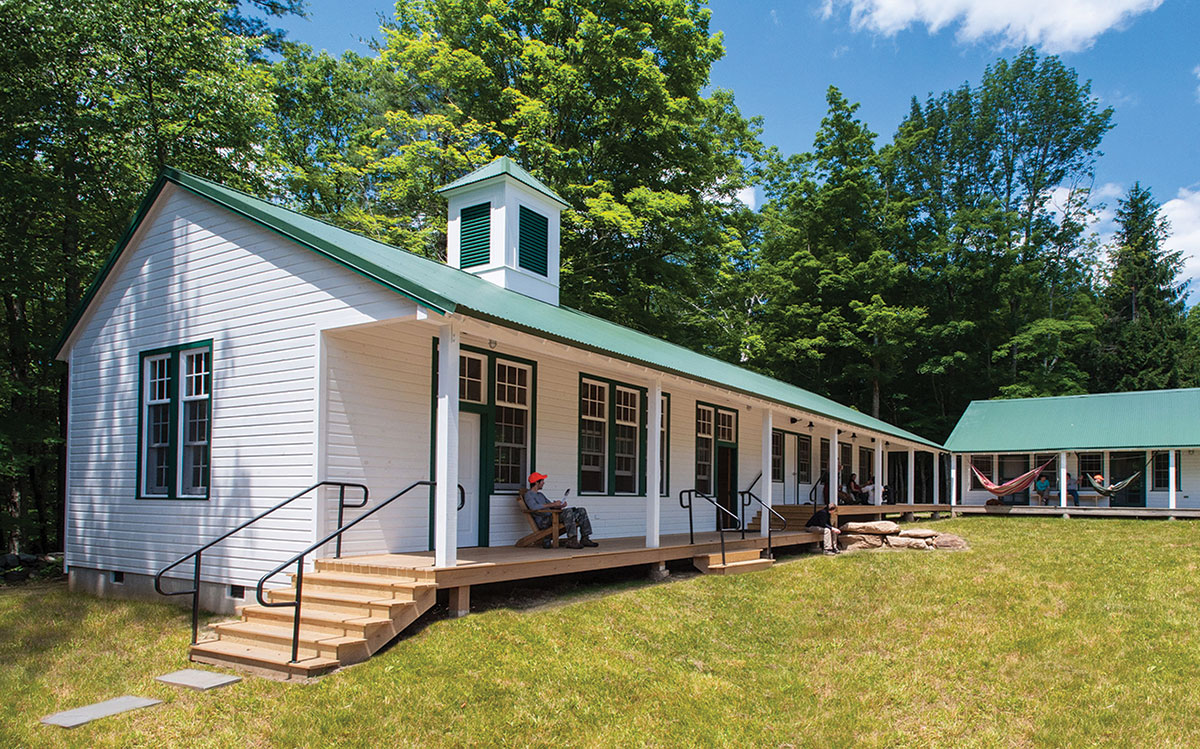Yale-Myers Forest, CT
Yale-Myers Forest, CT

The Yale Myers Forest is located in northeastern Connecticut. The forest comprises 7,480 acres of mixed hardwood, pine, and hemlock. It has been managed continuously for over seventy five years by faculty and students at the Yale School of Forestry and Environmental Studies. For more information on the School Forests, please visit: environment.yale.edu/forests.
BASELINE REGENERATION STUDIES
The Physiology and Anatomy of Seedling Leaves
Studies starting in 1986 on the response of tree seedlings to light, soil moisture and soil nutrients continue to be conducted in controlled shelters. Experiments have so far investigated red oaks, white oaks and maples. Additionally, forest understory plantings of five red oak species have been planted across three replicate transects from ridge, midslope and valley sites. We are specifically testing whether related oak species respond differentially from each other in relation to understory irradiance regimes and below-ground resource gradients. We have been monitoring their survival and growth annually. Measurements of photosynthetic rates are being conducted using controlled light sources to imitate sunflecks. These measurements have been contrasted with diffuse light conditions both on sunny and cloudy days.
Population Studies on Advanced Regeneration
A study monitoring the population dynamics of advanced regeneration. This is another long-term study monitoring the periodic survival and recruitment of seedlings after masting events in relation to understory radiation and below-ground resource gradients (ridge, mid slope, and valley). We have been monitoring growth and survival of red oak, red maple, sugar maple, and white ash. Measurements are being made on radiation with data loggers, and hemispherical photographs of the forest canopy over the different seasons. Also soil moisture is being monitored using TDR to gauge seasonal flux in soil moisture. Next year we will be taking photosynthesis measurements. The objective is to generate a dynamic population model of regeneration flux in relation to resouce gradients and climatic seasonality that can be used to better predict nature of masting and survival of advance growth over time in different forest environments. This will serve as a template for the development of better predictive tools for silvicultural treatments such as those involved with shelterwood systems that rely upon advance regeneration for satisfactory establishment of a new stand.
Monitoring Floristic Patterns across Forest Landscapes
Long-term plots for monitoring the regeneration were first established in 1978. Four hundred regeneration and overstory plots along forty transects have been placed throughout the forest and have been re-measured in 1986 and 1996. All woody species by height classes were measured, and presence/absence of all herbaceous plants, ferns, and mushrooms recorded. In addition all standing and down woody debris by size class and species has been measured. All plots were located with GPS and put into GIS. Soil, hydrological, silvicultural treatment, and topographic overlays were used in GIS to examine floristic and regeneration variation at different spatial scales.
These plots have provided for a comprehensive herbarium (approx. 350 species of higher plants) and a frozen mushroom collection (approx. 100 mushroom spp). Papers are in the process of being prepared on: i) spatial floristics of herbs and ferns; ii) spatial and temporal patterns of woody plants in relation to soil, land use and disturbance history; and iii) woody debris patterns in relation to disturbance history.
Long term plans for this data is to start the construction of a site classification system for the forest and perhaps for northeastern Connecticut.
NATURAL FOREST SILVICULTURE
Savanna Woodland Restoration
In the summer of 1996 a treatment was set up to emulate a “savanna woodland”. Experiments have been designed to examine the long-term effects of fire on maintaining/changing the groundstory floristics of open grown oak-hickory woodland. Prescribe burns of the area will be done to monitor changes in floristics composition. Half the plots will be proteced from fire.
Natural Regeneration Methods
Experimental treatments have been set up to monitor the regeneration establishment of red oak in three shelterwood treatments. Studies are focusing on the competition bewteen understory fern and laurel with oak regeneration. Past studies studies have investigated the use of fire in controlling laurel and promoting the release of advance regeneration of oak. The current experiment continues to investigate this in conjunction with regeneration treatments for oak.